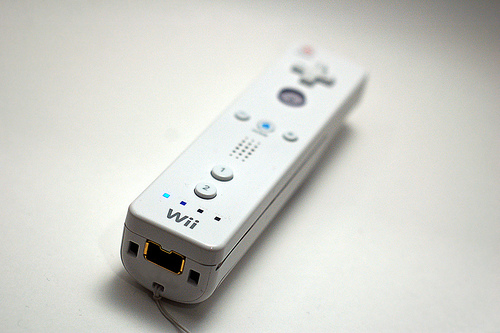Content Tech
Ideas for Technology Use in the Classroom
In an ongoing review of the book Using Technology with Classroom Instruction that Works, we will look at the strategy of nonlinguistic representation. A part of the introduction to this chapter grabbed my attention, so I’m going to take a slightly different approach to discussing this strategy. Instead of highlighting a particular tool to support instrcution, I’m going to spend a little time looking forward and predicting, based on what the authors wrote.
The book is copyrighted in 2007, which means the text was written most likely in the 2006-2007 timeframe. In the introductory portion of this section, Pitler et al write the following:
“Nintendo has already launched a video game console called Wii that finally allows kinesthetic learners to fully apply their strenghts to video games. The console controller fuses the familiarity of a remote control with the sophistication of motion-sensing technology. This Bluetooth input device allows for full-range movement. For example, in a tennis game, it serves as a racket you swing with your arm. In a driving game, it serves as your steering wheel. In addition to its pointing and motion-sensing abilities, the Wii remote also includes a speaker and rumble feature. It’s only a matter of time before educators will be able to leverage this technology.”
Fast forward to 2009 – the Wii is a wildly successful system. Along with that, we’ve also seen the introduction of the iPod Touch/iPhone with the multi-touch screen and accelerometer to sense motion. The price of these technologies is coming down, and more and more devices come out every day. The time where we can leverage this technology in school may be closer than we think.
So how might a motion sensing/touch screen device help learning? Here are just a few thoughts…
- Art – students use a motion sensing tool to paint using full body motions
- Geometry – drawing and measuring shapes in the air to physically feel area and depth while manipulating a model
- History – students use a simulation to act as a gunner on the USS Arizona during the Pearl Harbor attack, feeling the vibration while firing
- Technology – multi-touch pads are used to build 3D scale models
There may be virtually endless possibilites for these new devices, and they may come our way in the no-so-distant  future!
future!
Image courtesy of B Tal on Flickr
Comments
3 responses to “Content Tech: Nonlinguistic Representation”
These new technologies could open up a whole new world for special education students. We potentially could start seeing new strengths emerging from these students when given the opportunity to “interact” with their curriculum.
Because of the world that we live in, the students that we teach now are very technologically savvy. As teachers, we are challenged to change the way we teach in order to capitalize on these strengths. It will be exciting to see technologies, like the Wii, that will soon be developed for use in the classroom.
[…] Nonlinquistic Representation […]